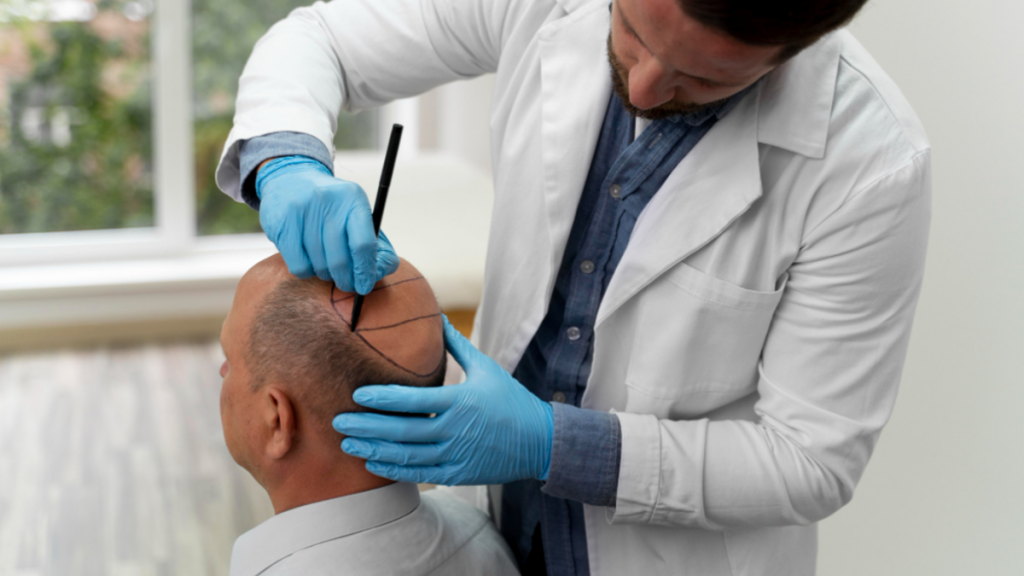The best hair transplant method for you depends on your individual needs and goals. Factors such as the extent of your hair loss, the quality of your donor hair, and your desired results will all play a role in determining the most suitable technique. Consulting with a qualified hair transplant specialist can help you make an informed decision.
Contents
1. Understanding Hair Transplantation
Hair transplantation is a surgical procedure designed to restore hair by relocating follicles from a donor area—usually the back or sides of the scalp—to areas experiencing baldness or thinning. The most popular techniques include Follicular Unit Transplantation (FUT) and Follicular Unit Extraction (FUE), alongside cutting-edge innovations like Direct Hair Implantation (DHI) and Robotic Hair Transplantation, which offer advanced precision and results. For more information, explore hair transplant.
Follicular Unit Transplantation (FUT)
Follicular Unit Transplantation (FUT) or the strip method starts with removing a donor area scalp strip then proceeds by breaking the strip into single follicular units which are later placed into the recipient area. The strip harvesting method suits people who need many hair grafts while providing good transplanted follicle success and affordable costs relative to FUE. The strip procedure impacts the donor area with a linear scar mark and needs prolonged recovery time because donor site healing requires stitches to heal.
Follicular Unit Extraction (FUE)
The hair restoration procedure known as Follicular Unit Extraction (FUE) removes individual scalp follicles through direct extraction to fill areas of thinning without taking any scalp strip for the transplant. Patients benefit from FUE through both minimal visible scar formation and rapid healing together with minimal pain experience after the procedure. The procedure takes longer for both price and time when compared with FUT and results occasionally show follicle death during extraction procedures.
Direct Hair Implantation (DHI)
DHI stands as an upgraded FUE method that employs specialized Choi implanter pens to insert the extracted follicles during the surgical process. The implantation tool called a Choi implanter pen helps surgeons achieve precise follicle placement which in turn speeds up recovery and decreases the chances of follicle destruction. This method comes with a higher cost than FUE and FUT yet needs a surgeon who is highly skilled to achieve ideal results.
Robotic Hair Transplantation
Robotic Hair Transplantation employs artificial intelligence together with robotic systems to achieve exact placement of hair follicles. The surgical technique provides improved precision together with uniformity while lowering human mistakes and operates with minimal invasiveness and leads to quick recovery times. straction using advanced technology makes this surgical procedure cost prohibitive since it exists sparsely in medical centers worldwide.
Appropriate Hair Transplant Operation Method.
A person should adopt the appropriate hair transplant technique based on various underlying factors. Heavy hair loss needs the FUT method when bulk graft transplantation is necessary but people with less extensive thinning find success with FUE and DHI approaches. Minimal scarring desires lead patients to choose FUE or DHI since these procedures produce less conspicuous outcomes than FUT. Sentiments about pricing must also be taken into account because FUT costs less than FUE, DHI and robotic hair transplant operations do. Survival periods differ between hair transplant procedures where FUE, DHI and robotic transplants allow patients to heal more quickly. Any treatment success depends heavily on the surgeon’s professional abilities and practice background.
Post-Transplant Care and Maintenance
The success of any transplant procedure depends on giving adequate attention to post-transplant care. Scalp cleanliness demands attention during the first week after transplantation while patients must protect their transplants from sunlight through avoidance and use proper medication per prescription. The nurse must strictly follow surgeon instructions to achieve both the best possible hair growth and long-term treatment success.
Conclusion
Each hair transplant method has its benefits and drawbacks, making it important to select the one that aligns with your specific needs, budget, and lifestyle. Consulting with a qualified hair transplant specialist can help you determine the best approach for achieving natural, long-lasting hair restoration results.

